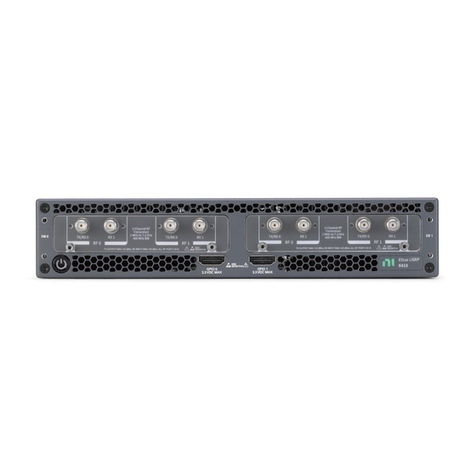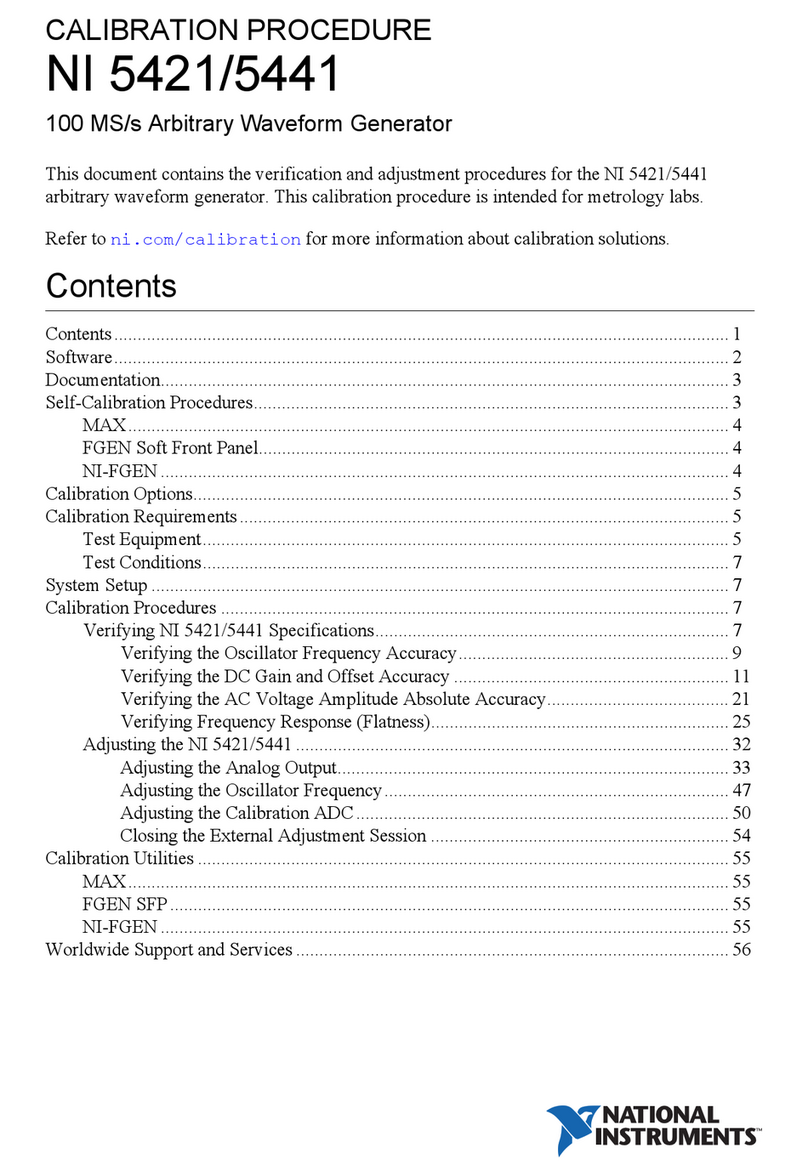
CALIBRATION PROCEDURE
NI PXI-5422
This document contains instructions for calibrating the NI PXI-5422 arbitrary waveform
generator. This calibration procedure is intended for metrology labs. It describes specific
programming steps for writing an external calibration procedure for the NI PXI-5422.
Refer to ni.com/calibration for additional information about calibration solutions from
National Instruments.
Contents
Software Requirements............................................................................................................. 1
Documentation Requirements .................................................................................................. 2
Password................................................................................................................................... 3
Calibration Interval................................................................................................................... 3
Self-Calibration Procedures...................................................................................................... 3
MAX................................................................................................................................. 4
FGEN Soft Front Panel..................................................................................................... 4
NI-FGEN .......................................................................................................................... 4
External Calibration Options ....................................................................................................5
Complete Calibration........................................................................................................ 6
Optional Calibration ......................................................................................................... 6
External Calibration Requirements .......................................................................................... 8
Test Equipment................................................................................................................. 8
Test Conditions.................................................................................................................9
External Calibration Procedures............................................................................................... 9
Writing Your Calibration Procedure ................................................................................ 9
Calibration Procedures in LabVIEW........................................................................ 9
Calibration Procedures in LabWindows/CVI........................................................... 9
Calibration Procedures in C...................................................................................... 10
Verifying NI PXI-5422 Specifications ............................................................................. 10
Verifying the Oscillator Frequency Accuracy.......................................................... 11
Verifying the DC Gain and Offset Accuracy ........................................................... 14
Verifying the AC Voltage Amplitude Absolute Accuracy....................................... 27
Verifying Frequency Response (Flatness)................................................................ 30
Adjusting the NI PXI-5422............................................................................................... 37
Initializing the External Calibration Session ............................................................ 39
Adjusting the Analog Output.................................................................................... 39
Adjusting the Oscillator Frequency.......................................................................... 52
Adjusting the Calibration ADC ................................................................................ 55
Closing the External Adjustment Session ................................................................ 59
































